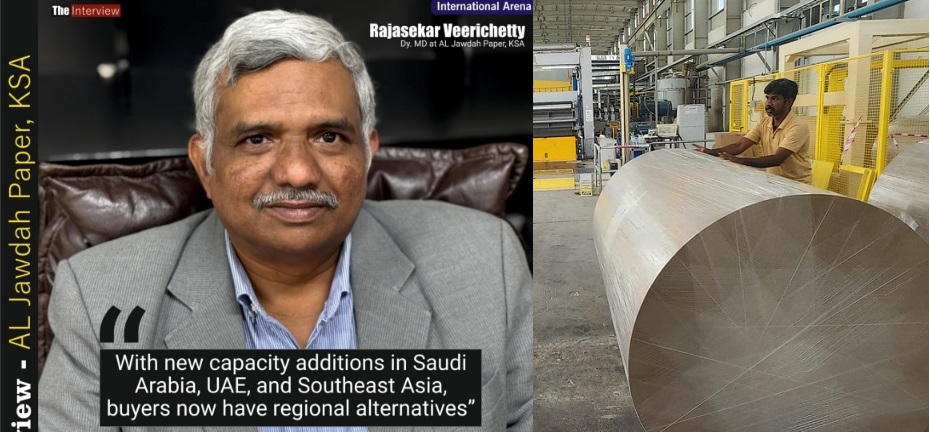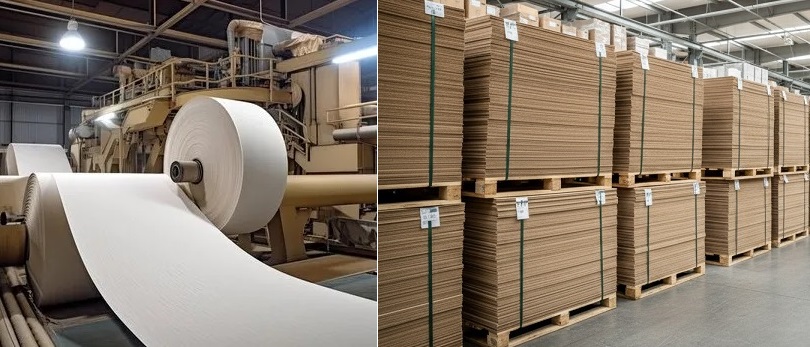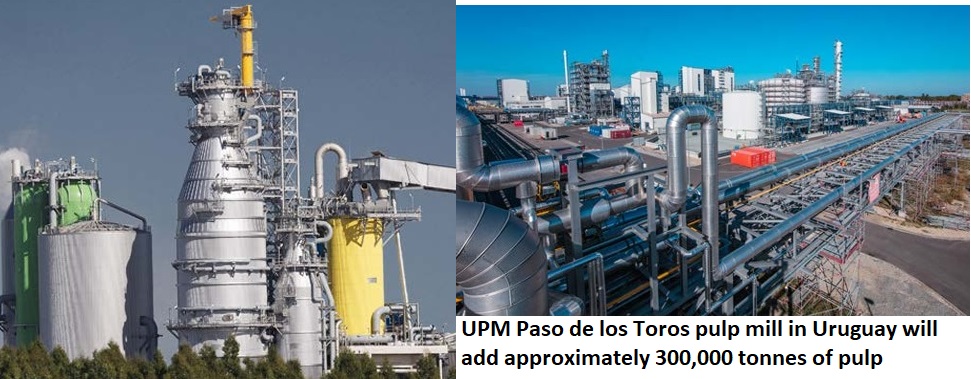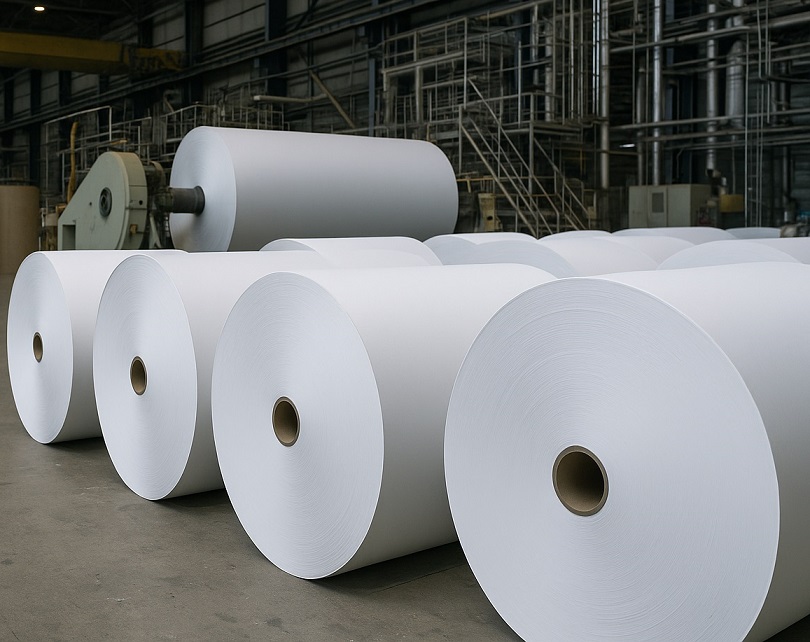China's paper industry: The price of cultural paper and white cardboard dropped by 600 yuan/ton each in 2024, reflecting an 'involution' decline
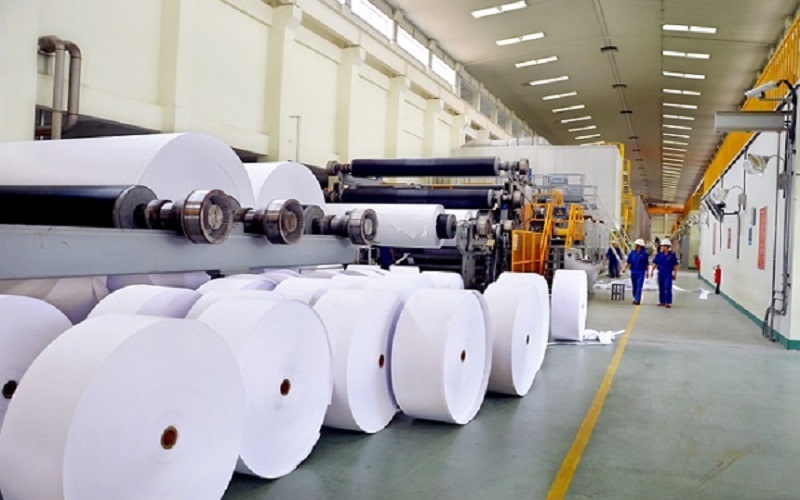
China's paper industry: The price of cultural paper and white cardboard dropped by 600 yuan/ton each in 2024, reflecting an 'involution' decline
-Chenming Paper released its third quarter report: Demand needs to be restored and policy implementation is expected to boost the industry's prosperity
The Pulp and Paper Times
On the evening of October 30, 2024, Chenming Paper disclosed its third quarter report for 2024. The report showed that the company achieved revenue of 5.94 billion yuan in the third quarter.
Chenming Paper said that since the beginning of this year, due to factors such as high raw material prices, lower-than-expected peak season demand, and continued downward price of products, some products have suffered serious losses, dragging down the company's profitability. In response, the company is actively optimizing product structure and adjusting production capacity layout to adapt to the dynamic changes in the market environment.
Industry analysts pointed out that in a complex and volatile market environment, the papermaking industry is facing multiple challenges such as fluctuations in raw material prices, the gradual introduction of new production capacity, demand yet to recover, and downward price of products. Therefore, coping with cost pressure, stabilizing product prices, and maintaining normal operations have become the key tasks of paper companies at this stage. However, although the overall recovery of the industry is slow, the industry is expected to recover amid the fluctuations against the backdrop of policy efforts and positive economic expectations.
Cost and price become key challenges, paper companies "band together" to raise prices
Since 2024, the papermaking industry has faced the dual challenges of cost and price. On the cost side, domestic paper companies have significantly slowed down the pace of pulp procurement since this year, but affected by the Red Sea incident, the European market has entered a replenishment cycle, bringing about this round of pulp cyclical disorder. From the trend point of view, during the year, the prices of coniferous pulp and broadleaf pulp have shown a trend of rising first and then falling, but because the previous prices have always remained at a high level, the effect of the recent price reduction still needs a transmission process, and the cost pressure on papermaking companies is still relatively large. According to Tianfeng Light Textile data, as of September 30, the average price of domestic coniferous pulp reached 6,113 yuan/ton, an increase of 248 yuan/ton from the beginning of the year; the price of domestic broadleaf pulp was 4,880 yuan/ton, a decrease of about 123 yuan/ton from the beginning of the year.
On the price side, as of September 30, the price of cultural paper was about 5,200 yuan/ton, down 600 yuan/ton from the beginning of the year; the price of white cardboard was about 4,000 yuan/ton, down 600 yuan/ton from the beginning of the year. Product prices showed an "involution" decline.
However, under heavy pressure, leading companies in the industry are constantly adjusting their strategies to cope with the industry's "involutionary" competition.
Recently, leading companies such as Nine Dragons Paper, Chenming Paper, Sun Paper, and Asia Pacific Sun Paper have "officially announced" price increases, with a strong sense of "anti-involution". As for the reason for the price increase, Nine Dragons Paper mentioned that the price and value of white cardboard have seriously deviated since the beginning of this year, and the company's white cardboard products have continued to lose money. The price increase is to better provide products and services to customers and prevent "involution" competition. Chenming Paper, Sun Paper, and Asia Pacific Sun Paper pointed out that due to high operating costs, the price increase is actually to ease cost pressure, and the reverse fluctuations in the prices of raw and auxiliary materials and paper have increased the operating pressure of enterprises. In addition, many leading companies have carried out shutdown maintenance.
This week, several leading paper companies announced that they will raise prices for their main products starting November 1. This is the fourth round of price increases by paper companies this year, with the first three rounds in January, March and May. Industry insiders pointed out that this round of price increases has been brewing for a long time, and as the deviation between corporate product prices and costs gradually widens, this round of price increases is expected to be more determined than before.
CICC predicts that pulp prices may fall first and then stabilize and rise, which will test the leading enterprises' ability to stabilize prices and control costs. Industry insiders generally believe that the uncertainty of pulp price fluctuations requires papermaking enterprises to adjust procurement strategies more flexibly and optimize inventory management to cope with challenges on the cost side.
Demand needs to be restored and policy implementation is expected to boost industry prosperity.
In the first three quarters, the overall performance of the paper industry was relatively flat. The prices of cultural paper, white cardboard, and packaging paper all showed a downward trend. The expected release of new production capacity has put pressure on paper prices to rise. Industry insiders pointed out that under the current macroeconomic environment, residents' consumption willingness is relatively conservative, and the demand for paper products is weak. Although the market segments such as educational publishing and professional books still maintain stable demand, overall, the demand side of the paper industry is weak.
In July this year, the Political Bureau meeting pointed out for the first time that "domestic demand should be expanded with a focus on boosting consumption". In October, the National Development and Reform Commission proposed to focus more on the policy of expanding domestic demand and increasing consumption. CICC predicts that with the implementation of policies and the arrival of the peak season, enterprises are expected to usher in a "widening pulp and paper scissors gap" market in the fourth quarter of this year, with inventory costs falling and downstream replenishment and price increases during the peak season. Enterprises with excellent cost control, stable sector structure and profit safety margin are expected to benefit fully.
With the positive expectation of improving industry prosperity, Chenming Paper said, "We will continue to consolidate our internal strength, strengthen internal management, focus on the development of our main business, strive to maintain stable operations amid cost fluctuations, and promote the long-term development of the company.
"For example, in terms of internal management, we will strengthen the control of sales and costs, be market-oriented, and actively seek profit growth. On the cost side, we will further enrich the raw material procurement channels, optimize the cooperation with suppliers, and reduce procurement costs; we will effectively control cost expenditures by optimizing inventory management and improving production efficiency. In terms of focusing on the main business, we will sell inefficient assets, divest and reduce non-core businesses, further focus on the development of pulp and papermaking, and integrate advantageous resources to enhance the company's comprehensive operational capabilities."
Public information shows that Chenming Paper has gradually divested non-core businesses such as Tuoan Plastics and hotels. The once-highly-watched financial leasing business has also been significantly reduced.
A relevant person in charge of Chenming Paper said: "In the future, we will strengthen market operations, develop high value-added products, optimize product structure, implement adjustments to industrial layout, continue to increase the disposal of non-core assets, reduce costs and increase efficiency, and improve the quality of corporate operations. At the same time, we will continue to integrate and optimize the entire industrial chain, give play to the advantages of 'pulp and paper integration', improve corporate operating efficiency and quality, continuously enhance our ability to adapt to complex market environments, consolidate the foundation of corporate development, and strive to achieve long-term development of the company
The above article has been extracted from SHANDONG CHENMING PAPER HOLDINGS LIMITED’s website
Web Title: China's paper industry: The price of cultural paper and white cardboard dropped by 600 yuan/ton each in 2024, reflecting an 'involution' decline





 Join WhatsApp Group
Join WhatsApp Group Join Telegram Channel
Join Telegram Channel Join YouTube Channel
Join YouTube Channel Join Job Channel (View | Submit Jobs)
Join Job Channel (View | Submit Jobs) Join Buy Sell Channel (Free to Submit)
Join Buy Sell Channel (Free to Submit) Paper News Headlines Channel (Free to read)
Paper News Headlines Channel (Free to read)



